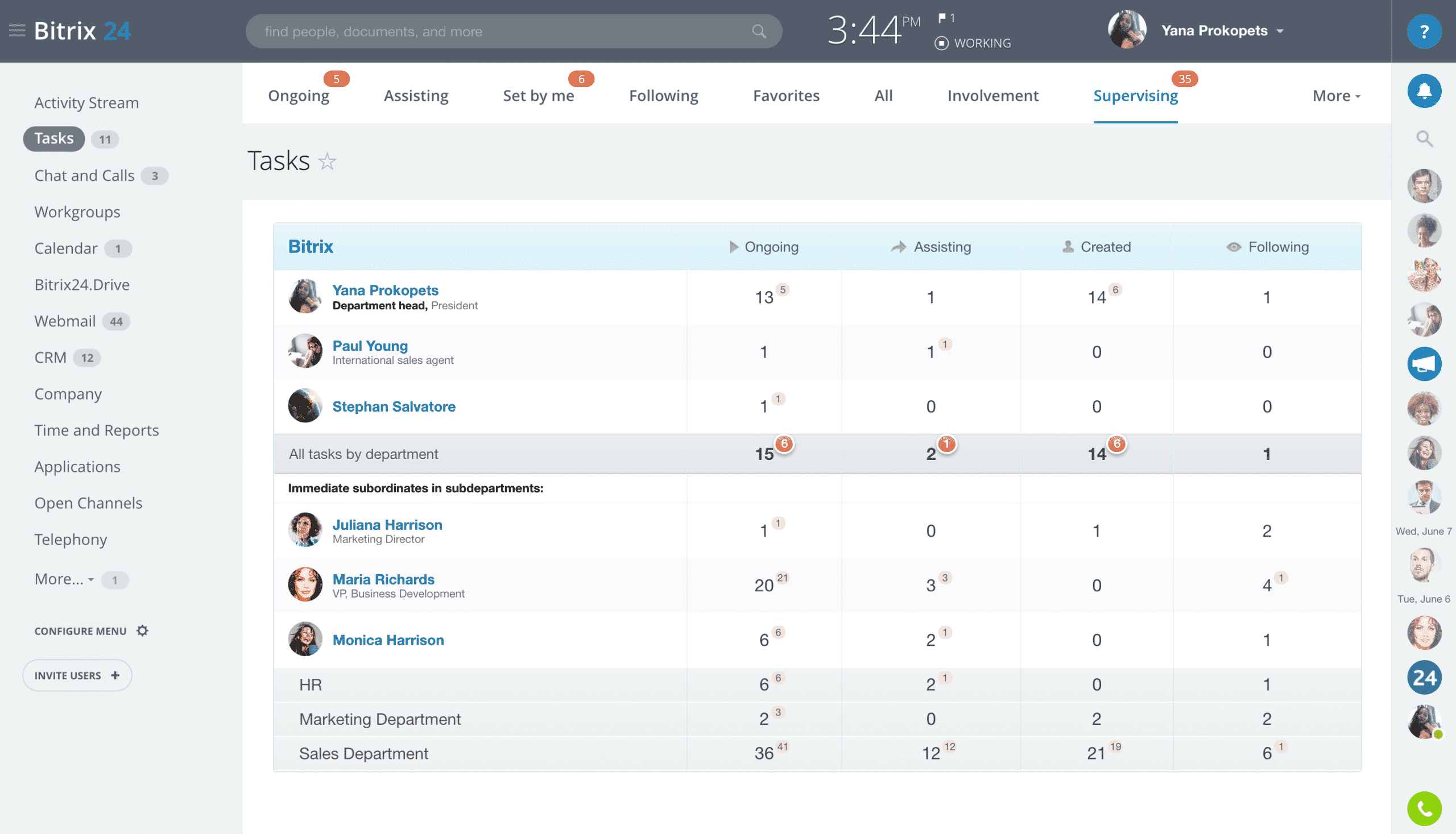Unlocking Growth: A Comprehensive Guide to CRM Marketing Analytics
In today’s hyper-competitive business landscape, understanding your customers is no longer a luxury – it’s a necessity. Businesses are drowning in data, but without the right tools and strategies, this data remains untapped, a vast ocean of potential insights. That’s where CRM marketing analytics comes in. It’s the key to unlocking the power of your customer data, transforming raw information into actionable strategies that drive growth and boost profitability.
This comprehensive guide will delve deep into the world of CRM marketing analytics. We’ll explore what it is, why it’s crucial, how to implement it effectively, and the specific benefits it offers. Whether you’re a seasoned marketing professional or just starting out, this guide will provide you with the knowledge and tools you need to leverage the power of CRM marketing analytics and achieve your business goals.
What is CRM Marketing Analytics?
CRM marketing analytics is the process of analyzing customer data within a Customer Relationship Management (CRM) system to gain insights into customer behavior, preferences, and trends. It involves collecting, organizing, and interpreting customer data to understand how customers interact with your brand, products, and services. This understanding allows you to make data-driven decisions about your marketing efforts, leading to more effective campaigns, improved customer experiences, and ultimately, increased revenue.
Think of it as the science of understanding your customers. It’s about moving beyond gut feelings and intuition and relying on concrete data to inform your marketing strategies. It’s about knowing who your customers are, what they want, and how to give it to them in the most effective and efficient way possible.
Key Components of CRM Marketing Analytics:
- Data Collection: Gathering customer data from various sources, including CRM systems, website analytics, social media, email marketing platforms, and point-of-sale systems.
- Data Organization: Cleaning, organizing, and structuring the collected data to ensure accuracy and consistency.
- Data Analysis: Using analytical techniques and tools to identify patterns, trends, and insights within the data. This can involve segmentation, cohort analysis, predictive modeling, and more.
- Reporting and Visualization: Presenting the findings in a clear and concise manner through reports, dashboards, and visualizations. This allows stakeholders to easily understand the insights and make informed decisions.
- Actionable Insights: Translating the analysis into actionable strategies and recommendations for improving marketing performance.
Why is CRM Marketing Analytics Important?
In a world saturated with marketing messages, standing out from the crowd is more challenging than ever. CRM marketing analytics provides the competitive edge needed to succeed. It’s not just about collecting data; it’s about using that data to make smarter, more informed decisions, leading to better results. Here are some key reasons why CRM marketing analytics is so critical:
- Improved Customer Understanding: CRM marketing analytics provides a 360-degree view of your customers, enabling you to understand their demographics, behaviors, preferences, and needs. This deeper understanding allows you to personalize your marketing efforts and create more relevant and engaging experiences.
- Enhanced Marketing ROI: By analyzing the performance of your marketing campaigns, you can identify what’s working and what’s not. This allows you to optimize your campaigns, allocate your budget more effectively, and ultimately, improve your return on investment (ROI).
- Increased Customer Retention: CRM marketing analytics helps you identify at-risk customers and proactively address their concerns. By providing personalized support and offers, you can increase customer satisfaction and loyalty, leading to higher retention rates.
- Better Lead Generation: By analyzing lead behavior and identifying the most promising leads, you can focus your sales efforts on the prospects most likely to convert. This leads to a more efficient sales process and higher conversion rates.
- Personalized Customer Experiences: Data-driven insights enable you to tailor your marketing messages, offers, and content to individual customer preferences. This personalization creates a more relevant and engaging experience, leading to increased customer satisfaction and loyalty.
- Data-Driven Decision Making: CRM marketing analytics moves your marketing efforts away from guesswork and intuition and towards data-driven decision-making. This results in more informed strategies, improved campaign performance, and better business outcomes.
- Competitive Advantage: By leveraging the power of customer data, you can gain a competitive advantage over your rivals. You can better understand your target market, identify new opportunities, and tailor your offerings to meet evolving customer needs.
Key Metrics and KPIs in CRM Marketing Analytics
To effectively measure and track your marketing performance, it’s essential to focus on the right metrics and key performance indicators (KPIs). These metrics will vary depending on your specific business goals and objectives, but some of the most common and important ones include:
- Customer Acquisition Cost (CAC): The cost of acquiring a new customer. This metric helps you understand the efficiency of your marketing campaigns.
- Customer Lifetime Value (CLTV): The predicted revenue a customer will generate throughout their relationship with your business. CLTV helps you assess the long-term value of your customers and make informed decisions about customer retention strategies.
- Conversion Rate: The percentage of leads that convert into customers. This metric measures the effectiveness of your sales and marketing efforts.
- Churn Rate: The percentage of customers who stop doing business with you over a given period. This metric indicates customer satisfaction and loyalty.
- Website Traffic: The number of visitors to your website. This metric helps you understand the reach of your marketing efforts.
- Click-Through Rate (CTR): The percentage of users who click on a specific link in your email campaigns or online ads. This metric measures the engagement with your marketing content.
- Open Rate: The percentage of recipients who open your email campaigns. This metric helps you assess the effectiveness of your email subject lines and content.
- Return on Investment (ROI): The profit generated from your marketing campaigns relative to the cost of those campaigns. ROI is a crucial metric for evaluating the overall effectiveness of your marketing efforts.
- Customer Satisfaction Score (CSAT): A metric that measures customer satisfaction with your products or services.
- Net Promoter Score (NPS): A metric that measures customer loyalty and willingness to recommend your business to others.
Implementing CRM Marketing Analytics: A Step-by-Step Guide
Implementing CRM marketing analytics can seem daunting, but by following a structured approach, you can ensure a successful implementation. Here’s a step-by-step guide:
- Define Your Goals and Objectives: Before you begin, clearly define your marketing goals and objectives. What do you want to achieve with CRM marketing analytics? Are you trying to increase sales, improve customer retention, or generate more leads? Having clear goals will help you select the right metrics and track your progress.
- Choose a CRM System: If you don’t already have one, select a CRM system that meets your business needs. Consider factors such as features, scalability, integration capabilities, and cost. Popular CRM systems include Salesforce, HubSpot, Zoho CRM, and Microsoft Dynamics 365.
- Integrate Your Data Sources: Connect your CRM system to all relevant data sources, such as your website analytics platform, email marketing platform, social media channels, and point-of-sale systems. This will ensure that you have a comprehensive view of your customer data.
- Clean and Organize Your Data: Ensure that your data is clean, accurate, and consistent. This may involve removing duplicate entries, correcting errors, and standardizing data formats.
- Segment Your Customers: Divide your customers into segments based on their demographics, behaviors, and preferences. This will allow you to personalize your marketing efforts and create more targeted campaigns.
- Set Up Tracking and Reporting: Implement tracking mechanisms to monitor your key metrics and KPIs. Use dashboards and reports to visualize your data and track your progress towards your goals.
- Analyze Your Data: Regularly analyze your data to identify patterns, trends, and insights. Use analytical tools and techniques to gain a deeper understanding of your customers and their behavior.
- Develop Actionable Insights: Translate your data analysis into actionable insights and recommendations. Use these insights to optimize your marketing campaigns, improve customer experiences, and drive business growth.
- Test and Optimize: Continuously test and optimize your marketing efforts based on your data analysis. Experiment with different strategies and tactics to see what works best.
- Review and Refine: Regularly review your CRM marketing analytics strategy and make adjustments as needed. The marketing landscape is constantly evolving, so it’s important to stay adaptable and responsive to change.
Tools and Technologies for CRM Marketing Analytics
Several tools and technologies can help you implement and leverage CRM marketing analytics. Here are some of the most popular and effective options:
- CRM Systems: As mentioned earlier, CRM systems are the foundation of CRM marketing analytics. They provide a centralized platform for storing and managing customer data.
- Data Visualization Tools: Tools like Tableau, Power BI, and Google Data Studio allow you to create interactive dashboards and reports that visualize your data in a clear and concise manner.
- Business Intelligence (BI) Tools: BI tools provide advanced analytics capabilities, including data mining, predictive modeling, and data warehousing. Popular BI tools include Qlik, Domo, and Sisense.
- Marketing Automation Platforms: Platforms like HubSpot, Marketo, and Pardot automate your marketing tasks, such as email marketing, lead nurturing, and social media management. These platforms also provide valuable data and analytics.
- Web Analytics Platforms: Platforms like Google Analytics and Adobe Analytics track website traffic, user behavior, and conversion rates.
- Customer Data Platforms (CDPs): CDPs collect and unify customer data from various sources, providing a single view of each customer.
- Statistical Software: Tools like R and Python can be used for advanced statistical analysis and data modeling.
- Spreadsheet Software: While not as powerful as dedicated analytics tools, spreadsheet software like Microsoft Excel and Google Sheets can be used for basic data analysis and reporting.
Best Practices for CRM Marketing Analytics
To maximize the effectiveness of your CRM marketing analytics efforts, it’s essential to follow these best practices:
- Focus on Data Quality: Ensure that your data is accurate, complete, and consistent. Poor data quality can lead to inaccurate insights and flawed decision-making.
- Prioritize Customer Privacy: Respect customer privacy by complying with data protection regulations, such as GDPR and CCPA. Be transparent about how you collect and use customer data.
- Start Small and Iterate: Don’t try to implement everything at once. Start with a few key metrics and gradually expand your analysis as you gain experience.
- Involve the Right People: Ensure that you have the right people involved in your CRM marketing analytics efforts, including marketing professionals, data analysts, and IT specialists.
- Communicate Your Findings: Share your findings with stakeholders in a clear and concise manner. Use visualizations and reports to communicate your insights effectively.
- Be Proactive: Don’t wait for problems to arise before you start analyzing your data. Proactively monitor your metrics and identify potential issues before they impact your business.
- Continuously Learn and Adapt: The field of CRM marketing analytics is constantly evolving. Stay up-to-date on the latest trends and technologies and be willing to adapt your strategies as needed.
- Align with Business Goals: Ensure that your CRM marketing analytics efforts are aligned with your overall business goals and objectives. This will help you prioritize your efforts and ensure that you’re focusing on the right things.
- Automate Where Possible: Automate your data collection, analysis, and reporting processes to save time and improve efficiency.
- Regularly Review and Refine: Periodically review your CRM marketing analytics strategy and make adjustments as needed. The marketing landscape is dynamic, so staying flexible is key.
Examples of CRM Marketing Analytics in Action
Let’s look at some real-world examples of how businesses are using CRM marketing analytics to achieve impressive results:
- Personalized Email Marketing: An e-commerce company uses CRM data to segment its customers based on their purchase history and browsing behavior. They then send personalized email campaigns featuring products that are relevant to each customer’s interests, leading to a significant increase in click-through rates and conversions.
- Predictive Lead Scoring: A B2B software company uses CRM data and machine learning to score leads based on their likelihood of converting into customers. This allows the sales team to prioritize the most promising leads, resulting in a higher conversion rate and a shorter sales cycle.
- Customer Churn Prevention: A subscription-based service analyzes customer data to identify customers who are at risk of churning. They then proactively reach out to these customers with personalized offers and support, reducing churn and increasing customer lifetime value.
- Campaign Performance Optimization: A marketing agency uses CRM data to track the performance of its marketing campaigns. They analyze the data to identify the most effective channels, messages, and offers, allowing them to optimize their campaigns and improve their ROI.
- Customer Segmentation for Targeted Advertising: A retail chain segments its customer base based on demographics, purchase history, and online behavior. This segmentation enables them to run highly targeted advertising campaigns on social media and other platforms, resulting in increased brand awareness and sales.
Challenges and How to Overcome Them
While CRM marketing analytics offers immense potential, it’s not without its challenges. Here are some common obstacles and how to overcome them:
- Data Silos: Data scattered across different systems can make it difficult to get a complete view of your customers. Solution: Integrate your data sources and implement a customer data platform (CDP) to unify your data.
- Data Quality Issues: Inaccurate, incomplete, or inconsistent data can lead to flawed insights. Solution: Implement data quality checks, clean your data regularly, and establish data governance policies.
- Lack of Expertise: A shortage of skilled data analysts can hinder your ability to analyze and interpret your data. Solution: Invest in training, hire data analysts, or partner with a consulting firm.
- Resistance to Change: Some employees may be resistant to adopting data-driven decision-making. Solution: Educate employees about the benefits of CRM marketing analytics, provide training, and foster a data-driven culture.
- Privacy Concerns: Complying with data privacy regulations can be complex. Solution: Implement data privacy policies, obtain consent from customers, and ensure that your data practices comply with regulations like GDPR and CCPA.
- Choosing the Right Tools: Selecting the right CRM system and analytics tools can be overwhelming. Solution: Carefully evaluate your needs, research different options, and consider a pilot program before making a final decision.
- Integrating with Existing Systems: Integrating new analytics tools with your existing systems can be challenging. Solution: Plan your integration carefully, involve IT specialists, and test thoroughly.
The Future of CRM Marketing Analytics
The future of CRM marketing analytics is bright, with exciting developments on the horizon. Here are some trends to watch:
- Artificial Intelligence (AI) and Machine Learning (ML): AI and ML are transforming CRM marketing analytics by automating tasks, providing more sophisticated insights, and enabling predictive modeling.
- Hyper-Personalization: Businesses will be able to create even more personalized customer experiences by leveraging AI and ML to understand individual customer preferences and behaviors.
- Real-Time Analytics: The ability to analyze data in real-time will become increasingly important, allowing businesses to make quick decisions and respond to changing customer needs.
- Focus on Customer Experience: CRM marketing analytics will play an even greater role in optimizing the customer experience across all touchpoints.
- Increased Automation: Marketing automation will become more sophisticated, with AI-powered tools automating more tasks and freeing up marketers to focus on strategic initiatives.
- Data Privacy and Security: As data privacy regulations become stricter, businesses will need to prioritize data security and implement robust privacy measures.
Conclusion
CRM marketing analytics is no longer a nice-to-have; it’s a must-have for businesses looking to thrive in today’s competitive landscape. By leveraging the power of customer data, you can gain a deeper understanding of your customers, personalize your marketing efforts, improve your ROI, and drive sustainable growth.
This guide has provided you with a comprehensive overview of CRM marketing analytics, including what it is, why it’s important, how to implement it, and the tools and technologies you can use. By following the best practices outlined in this guide, you can unlock the power of your customer data and achieve your business goals.
Embrace the power of data. Start analyzing. Start optimizing. Start growing.




